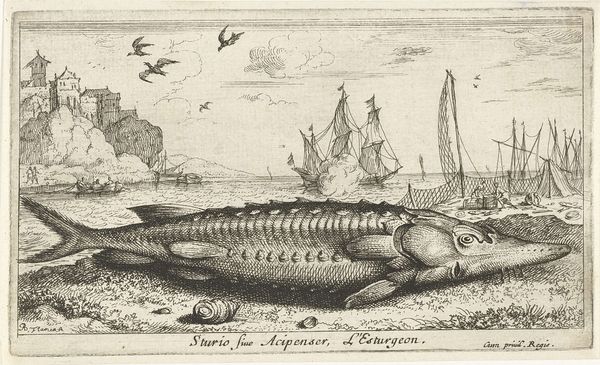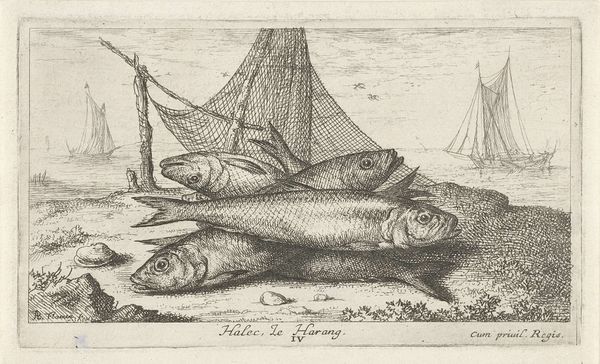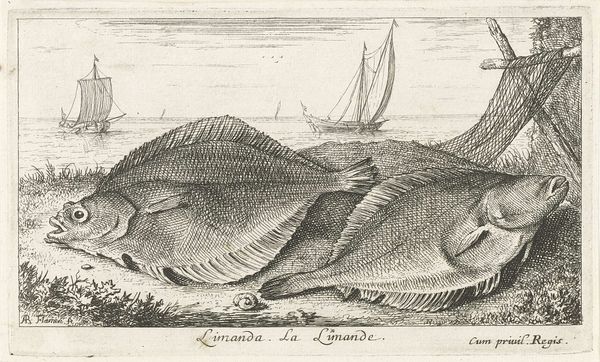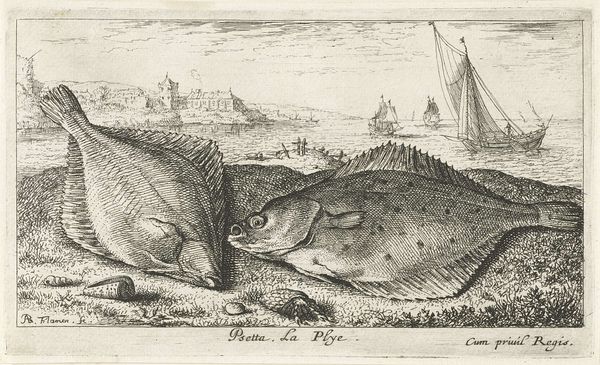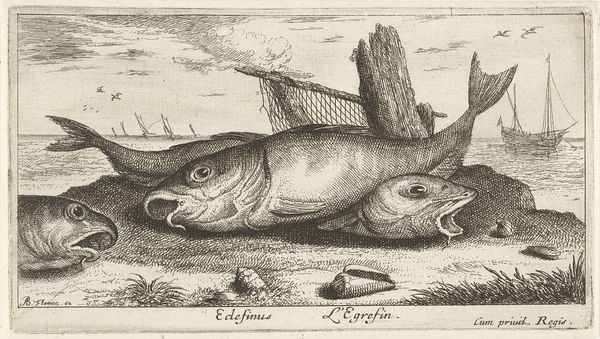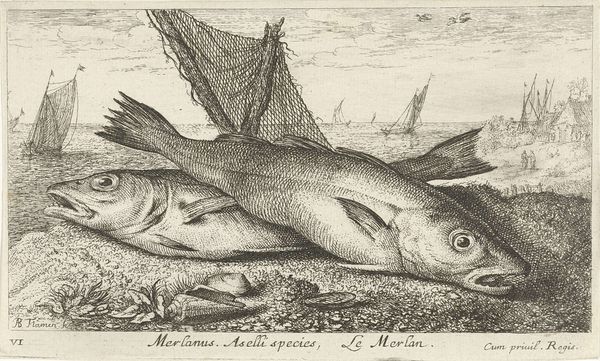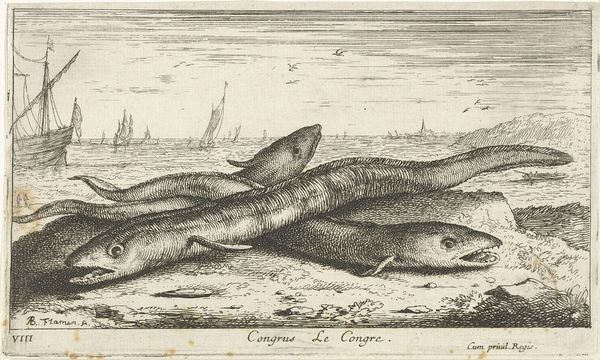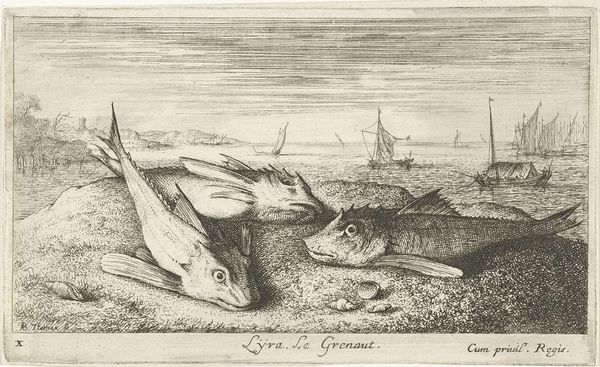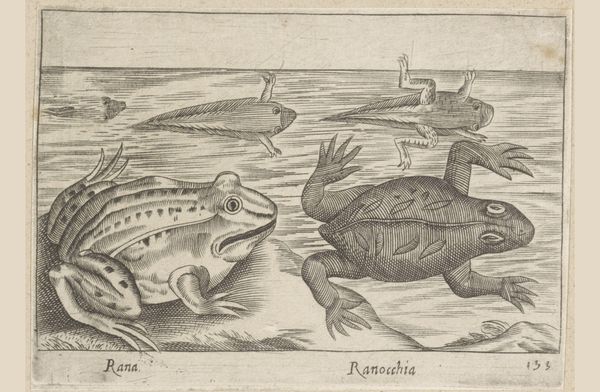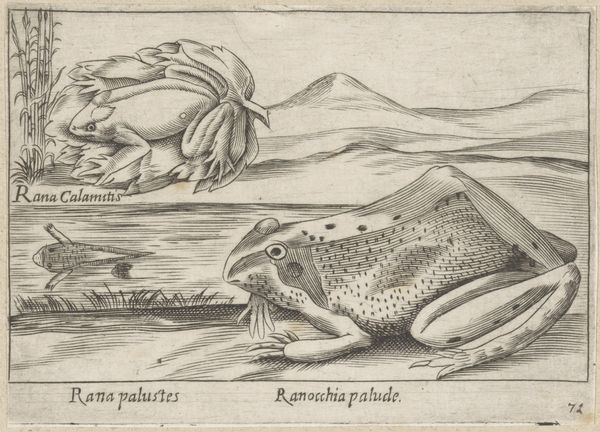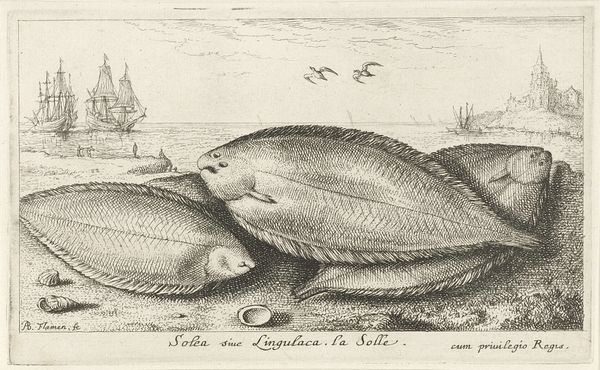
drawing, print, etching, ink
#
drawing
#
baroque
# print
#
pen illustration
#
etching
#
landscape
#
figuration
#
ink
#
genre-painting
#
realism
Dimensions: height 107 mm, width 175 mm
Copyright: Rijks Museum: Open Domain
Curator: Ah, the glorious absurdity of Albert Flamen's "Poon op het strand" from 1664, executed in etching, drawing, and ink. What's your take, Editor? Editor: I must say, my initial feeling is one of startled amusement. The scale is completely off! That enormous fish, beached like some forgotten leviathan, juxtaposed with the tiny, busy scene of ships and figures in the background... it feels delightfully surreal. Curator: Surreal indeed, though Flamen would've aimed for something else entirely! We need to contextualize this within the prevailing material conditions of the 17th century. Etchings like these served as accessible reproductions, disseminating images and information to a broader public beyond the elite. Look at the fineness of the lines; mass production elevated the printmaker. Editor: Absolutely! But beyond its production value, consider that huge, googly-eyed fish. Is it monstrous? Or just…pitiful? I see a loneliness in its bulging stare that gets amplified by that vast seascape behind. It almost mocks our human endeavors, doesn't it? All those tiny ships battling the waves while this monumental fish breathes its last breath on the shore. Curator: Well, "battling the waves" is romanticizing maritime labour slightly. These genre paintings—as they are sometimes called now—capture how a community defined itself through toil, resources, and a specific type of consumption. Even Flamen’s meticulous rendering of the scales speaks volumes about his engagement with the natural world as something to exploit. Editor: Maybe, but doesn't that reading also miss the whimsical nature of the piece? He positions the fish to be almost the primary figure of his own coastal illustration; its proximity to us dwarfs the seascape and prompts deeper questions beyond “exploitation.” Flamen wants to bring awareness to all parts of an ecosystem, however silly. I sense an unsteadiness in his style between hyper-realistic and impressionistic that he explores! Curator: Ah, "whimsy"! An easy escape. However, looking more closely I find myself reconsidering Flamen’s intent; the juxtaposition is thought-provoking. Editor: Exactly! The play between the detailed foreground and the hazily sketched background—between this enormous dying creature and those ant-like ships—gives the piece its dynamism and magic. A real invitation into Flamen's wonderfully off-kilter world.
Comments
No comments
Be the first to comment and join the conversation on the ultimate creative platform.
